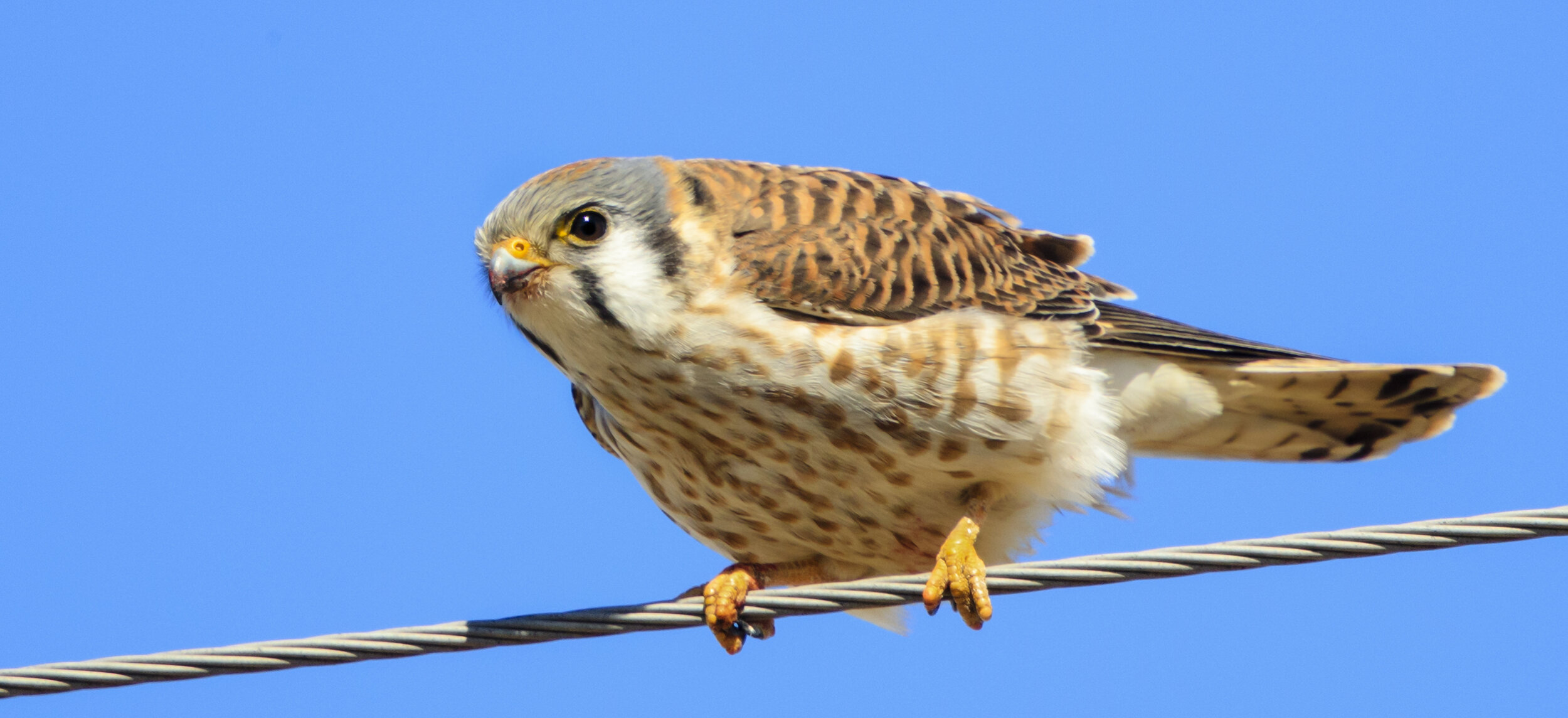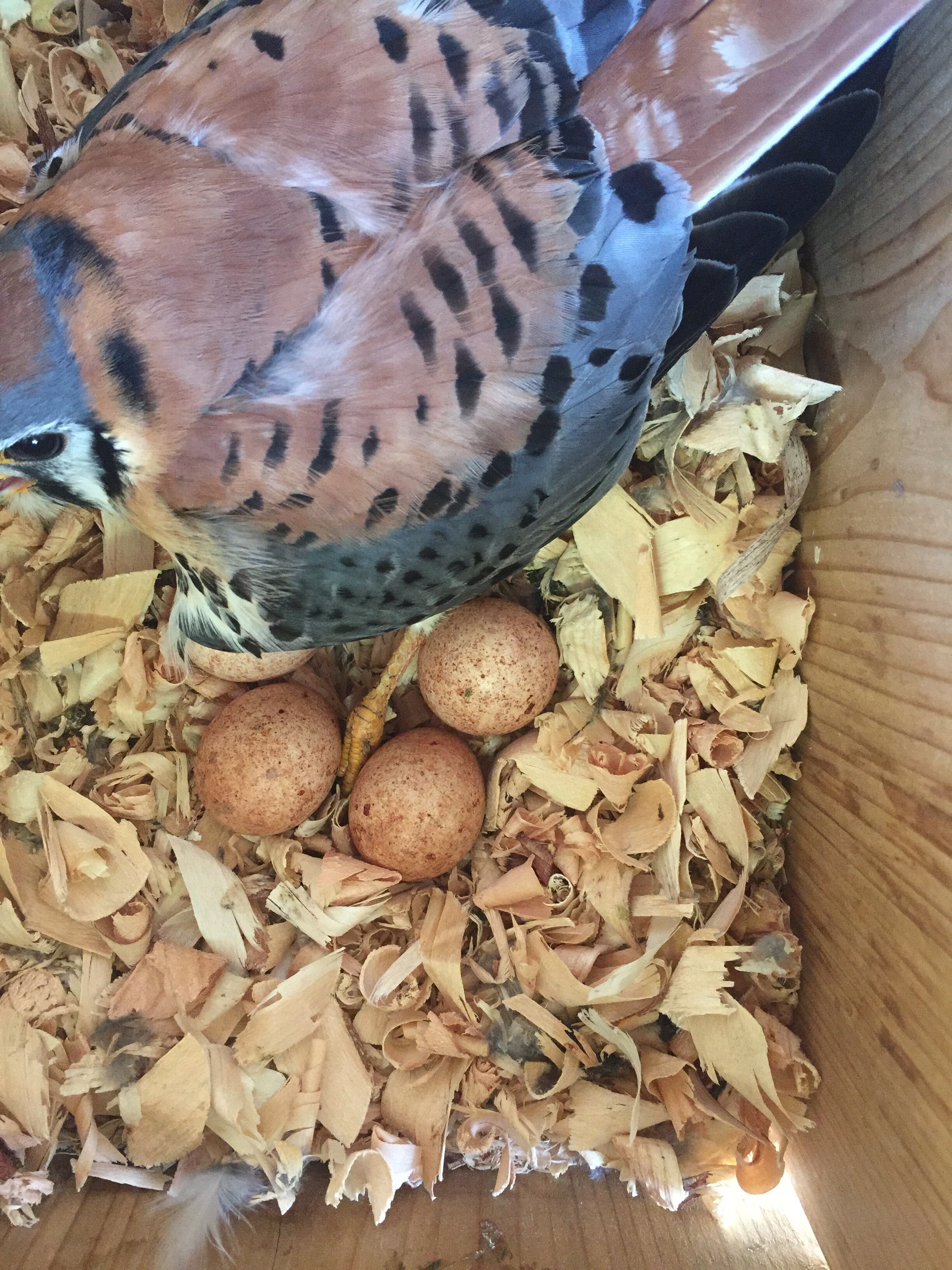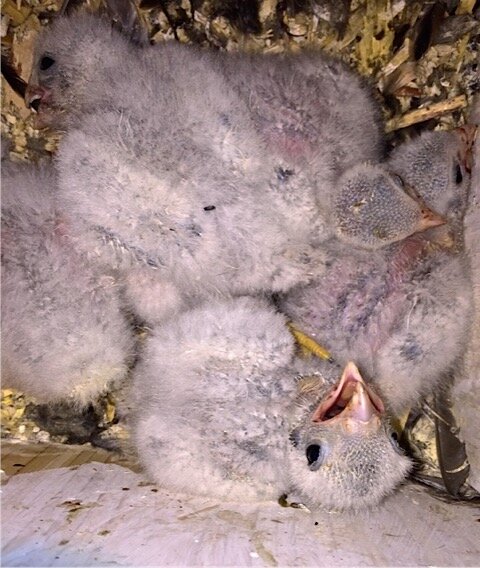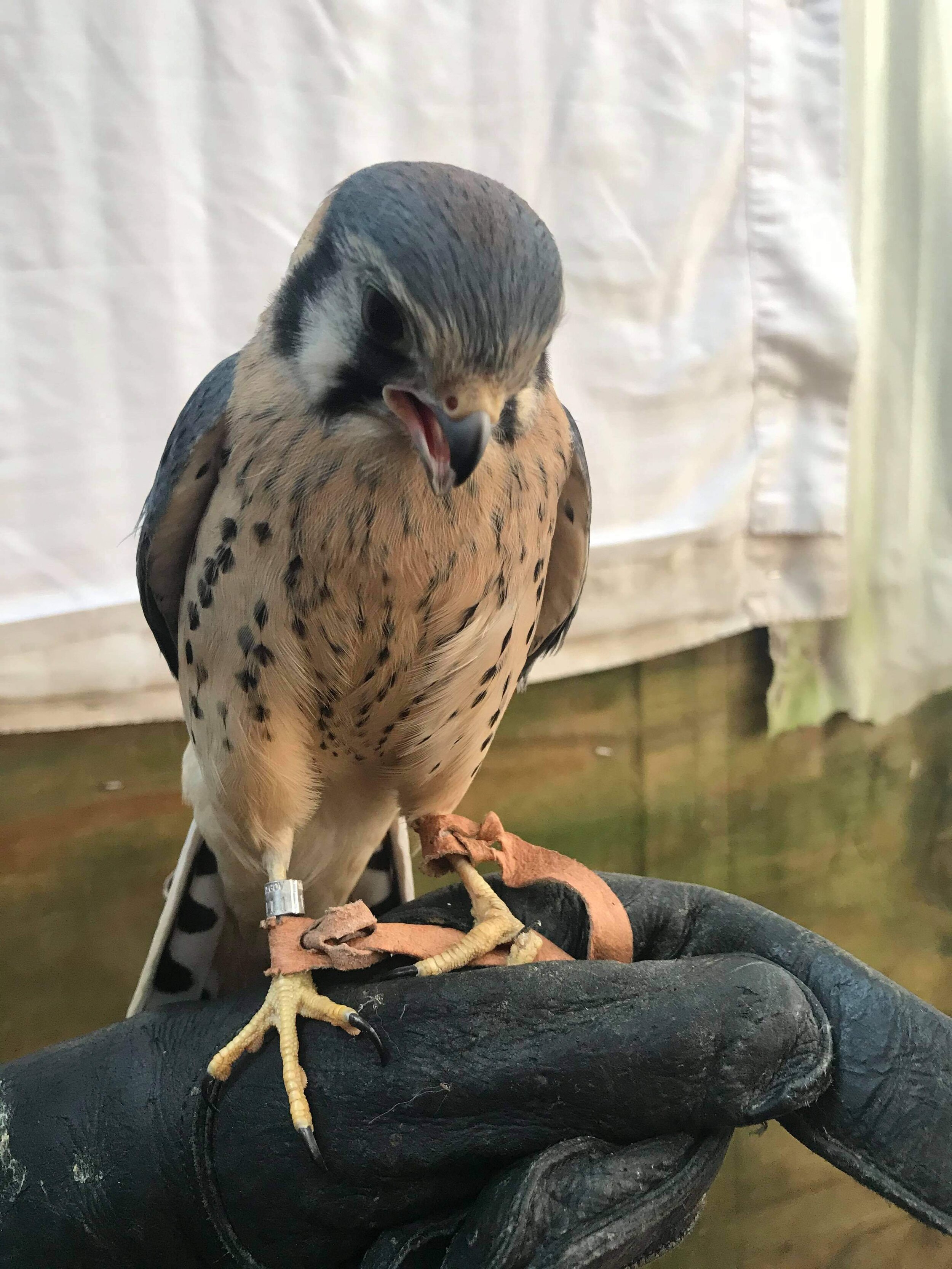American kestrel photo by Jim Stewart
Brand Smith, former MAS President, super volunteer, wonderful birder, and all-round nice guy, has led Madison Audubon's kestrel nest box monitoring program for several years. Many volunteers in turn have helped build and install the boxes and monitor them throughout the season. Madison Audubon has long documented the outstanding success of these nest boxes in helping kestrels produce healthy youngsters. In and of itself, that's invaluable because kestrels are on the sad list of bird species which are declining.
Brand and his volunteers saw and seized the opportunity to do more. They have invited kestrel researchers from Central Wisconsin Kestrel Research program in Stevens Point to participate in this program and band fledglings, record data, and take samples from the birds (without harming the birds in any way). Some of us might wonder, is such data useful and more specifically, how is it used. Brand just received a definitive and most positive answer to those questions. See below for a great description from the Peregrine Fund.
Nestbox photos by Patrick Ready
In addition, the volunteers are most concerned about the health of their kestrels. Brand also received a report on the fate of one bird, who was injured in such a way as to make his survival doubtful.
Please scroll down to review all this most happy information and some very cool photos of a most handsome young fellow. WAY TO GO, BRAND, VOLUNTEERS, AND RESEARCHERS!
Personal thanks to Brand and Jim Hess for allowing me to participate and helping me monitor three boxes. This, despite my three boxes not attracting one kestrel yet. I just don't understand. I always see kestrels just one mile south of the boxes and the boxes seem to be in prime habitat. I'll even stop the car occasionally and invite them just to fly one mile south to absolutely prime accommodations. With one box that we finally moved, I did learn about starling persistence. Jim and I would arrive and dump her nest out while she patiently watched from a nearby tree. She'd literally return to the box as we backed our cars out of the parking lot. Hoping for better results next year!
To learn more about the Madison Audubon kestrel nest box monitoring program, check out these links with recent information:
Madison Audubon’s webpage about the program
Wisconsin Natural Resources Magazine by WDNR, “A Favor for the ‘Falcon of Sparrows’”, Fall 2020
Written by Topf Wells, Madison Audubon board of director and advocacy committee chair
This email came from Janet Eschenbauch. She sent two photos of a kestrel chick (below) that was in one of our nest boxes, injured and sure to die. We remove the bird due to being the runt and not having a back toe on one foot. We sent him to a rehabilitation and good news came from the move:
Guess who has survived the loss of two toes and earned his jesses?! He is moving just north of Stevens Point and will live out his life as an educational bird with Rex Runke! Congrats, your decision to intervene saved his life! - Janet Eschenbauch, Central Wisconsin Kestrel Research
The data provided by Madison Audubon Society staff and volunteers has directly contributed to several recent scientific findings and ongoing scientific studies. Several of these are a part of the Full Cycle Phenology project, a large-scale collaborative effort between Boise State University, The Peregrine Fund, HawkWatch International, Colorado State University, St Mary's University, and US Army Engineer Research and Development Center.
One ongoing study looks to determine if and how American Kestrels are changing their breeding strategies in response to climate change. Conducted by PhD student Jason Winiarski at Boise State University, this massive study looks at observations from over 3,200 nests in 49 states and Canadian provinces, including many nest box observations submitted to the AKP by Madison Audubon. The study hopes to shed light on many different facets of the American Kestrel’s response to climate change, including which climatic factors influence the timing of nesting, how the timing of nesting changes in response to these factors, and whether these changes vary depending on where in North America the birds are found. Community science observations like those submitted through the AKP are allowing scientists to answer broad-scale questions like these for the very first time.
Another current study to which Madison Audubon contributes is led by Julie Heath's lab at Boise State University and examines American Kestrel migratory patterns using a technique called stable isotope analysis. There are several naturally occurring forms (known as stable isotopes) of hydrogen in the environment, and the proportion of these isotopes changes depending on where on earth you are. Kestrels pick up the local isotope “signature” through eating prey in that area, and this signature is deposited in their talons. Permitted banders across the country, including Madison Audubon’s partner, Janet Eschenbauch, have been collecting talon samples from birds they band and sending them for analysis. This allows scientists to read this “signature” and determine where the bird migrated from. Once completed, this study will offer new insight into the migratory pathways and habitat use of American Kestrels, both in Wisconsin and across North America. The American Kestrel Partnership is not directly involved in this study, though many of its partners sent talon samples for analysis.
A final recent study, conducted by Boise State University master’s student Kathleen Callery, looked at how kestrel breeding time relative to the start of the growing season affects kestrel productivity, in terms of how many young fledged from each nest. This has implications for climate change: if seasonal timing changes, and kestrels do not shift their timing to match, how might kestrel productivity change? American Kestrel Partnership data, including that submitted by Madison Audubon, was used to analyze patterns of timing and productivity across the contiguous US. One noteworthy result is that the window of time for successful breeding narrows as you move North and East across the country, a potential factor in the steeper population declines seen in this region. The results of the study will be published in a scientific journal, so Madison Audubon’s citizen science effort is directly contributing to advancing knowledge in the field of ecology.
There are very few data points from other parts of the Midwest, where information about kestrels is lacking in general, so Madison Audubon’s contributions are an integral part of understanding and reversing the threats currently facing this species. All of us at the American Kestrel Partnership extend a huge thank you for your ongoing participation in the project.
Matthew Danihel, CPBT-KA
Engagement Coordinator
The Peregrine Fund









